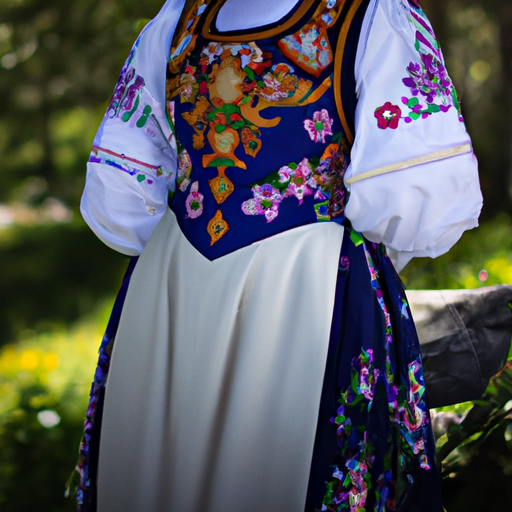Norway has a unique dress code that reflects its cultural heritage and appreciation for functionality and comfort.
By European standards especially, but even by American standards, Norwegian business dress code would be considered informal and casual.
In Norway it’s less important to display one’s wealth through fashion as you might see elsewhere.
In fact, wearing exotic or ostentatious outfits is usually discouraged in a business setting. Heaven forbid one stands out and attempts to bend the Law of Jante with a fabulous neckline.
Moving to a new country often means adjusting to different cultural norms, including dress codes. In Norway, much like in many other Western countries, the dress code tends to be quite casual in everyday situations but varies depending on the context. The Norwegian approach to clothing is often characterized by practicality and comfort, while still retaining a stylish and modern edge.
The climate plays a significant role in influencing the dress code, with Norway experiencing cold winters and mild summers. Norwegians take their outdoor activities seriously, regardless of the season, and their wardrobe choices reflect this love of nature. In this article, we will explore the typical dress code in various contexts in Norway, from professional environments to social occasions and outdoor activities.
Casual Attire
Norwegians tend to dress casually, particularly outside of work or formal occasions. This means that jeans, t-shirts, and sneakers are common, and there is a preference for comfortable and practical clothing. Outdoor activities such as hiking or skiing also require appropriate clothing, such as warm jackets, waterproof pants, and sturdy hiking boots.

Norwegian casual wear largely reflects the country’s love for the outdoors and its changing seasons. In the colder months, Norwegians opt for warm, practical clothing like good quality sweaters, scarves, and waterproof outerwear. During milder seasons, jeans, t-shirts, and comfortable shoes are common.
It’s worth noting that casual doesn’t mean sloppy in Norway. Even in their casual attire, Norwegians maintain a neat and presentable appearance. High-quality materials and a good fit are valued, so clothes are often simple but well-made.
Business Attire
In a professional setting, Norwegians typically dress smartly but not overly formal. Suits, dresses, and smart casual wear are common in offices, particularly in cities like Oslo and Bergen. However, there’s a general trend towards more casual attire in many workplaces, especially in creative and tech industries.

The key to understanding the professional dress code in Norway lies in the principle of ‘Janteloven‘ or ‘The Law of Jante.’ This is a cultural norm that downplays individual success and promotes societal equality. In clothing terms, this often translates into a preference for modest, high-quality, and practical clothes over flashy or luxury items.
Formal Attire
Formal occasions in Norway, such as weddings or banquets, require more formal attire. Men typically wear a suit and tie, while women may wear a cocktail dress or a gown. Traditional Norwegian clothing, known as bunad, is also appropriate for formal occasions.

Bunad
The bunad is a traditional Norwegian costume that dates back to the 1800s. Each region of Norway has its own distinct bunad, with variations in color, pattern, and embroidery. The bunad is typically worn for formal occasions, such as weddings or national holidays, and is considered a symbol of Norwegian identity and cultural heritage.
Accessories
Norwegians tend to prefer functional accessories that serve a practical purpose. This includes items such as scarves, hats, and gloves for cold weather, as well as backpacks or messenger bags for carrying personal belongings.
Footwear
Norwegians tend to favor practical and comfortable footwear, particularly for outdoor activities. Sturdy hiking boots, sneakers, and waterproof shoes are common, and it is not unusual to see people wearing these types of shoes in a business or formal setting as well.
Outdoor Clothing
Lastly, no discussion of Norwegian dress code would be complete without mentioning outdoor clothing. Norwegians take their outdoor activities seriously, and this is reflected in their clothing. High-quality, weather-appropriate clothing and gear are a must. In winter, this means thermal layers, insulated coats, and suitable footwear for snow. In the warmer months, breathable fabrics and waterproof layers in case of rain are common.
In Norway, it’s often said that ‘there’s no such thing as bad weather, only bad clothes.’ This phrase encapsulates the Norwegian attitude towards dress – practical, prepared, and always ready to embrace the outdoors, no matter the weather.
Conclusion
The Norwegian dress code is reflective of the country’s culture, values, and appreciation for functionality and comfort. While Norwegians tend to dress casually, they also value traditional clothing and appropriate attire for formal occasions. Understanding the Norwegian dress code can help visitors and newcomers feel more comfortable and prepared when attending various events and occasions in Norway.
